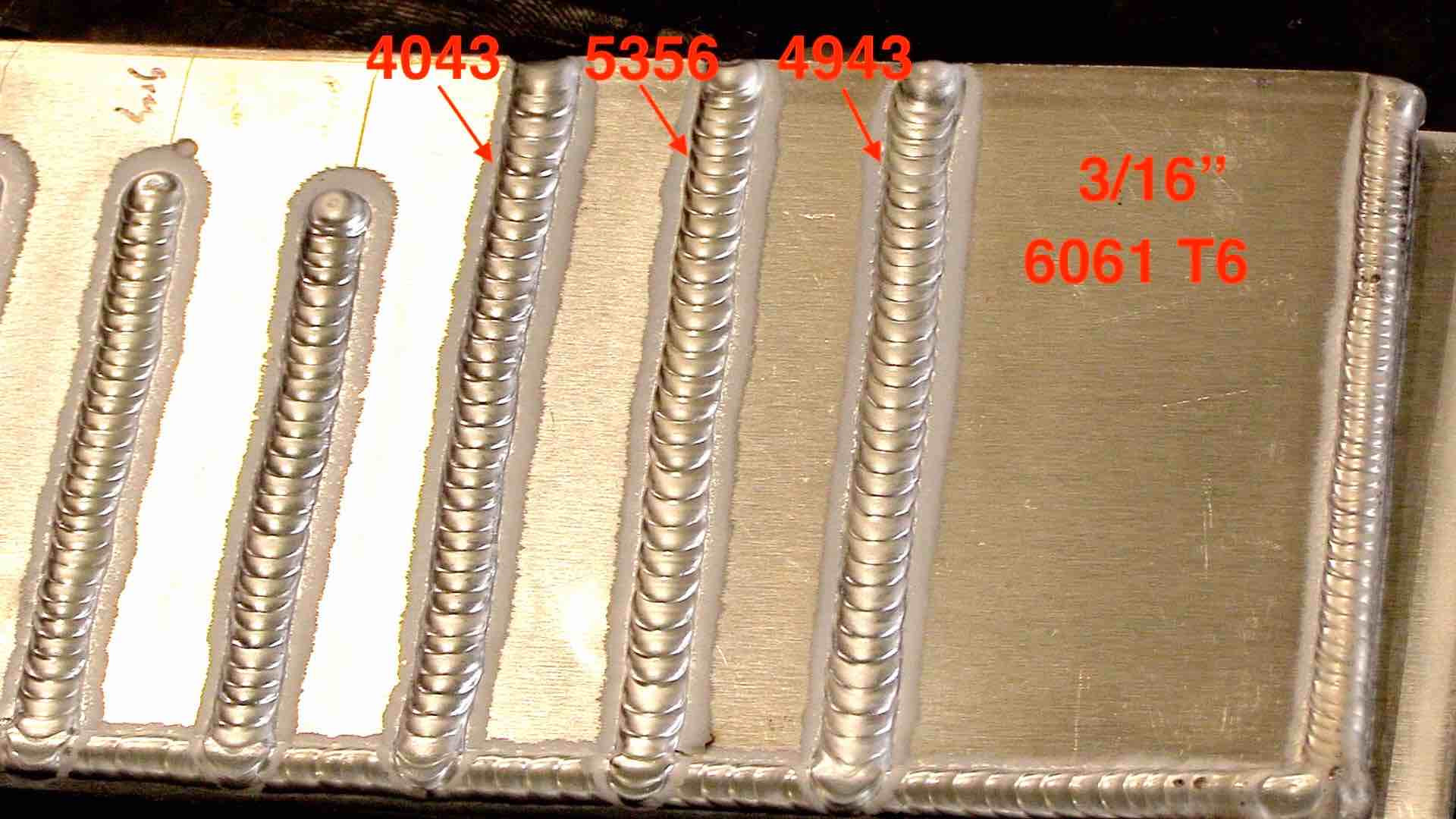Aluminum filler metal selection charts
Comparing 3 different aluminum Tig rods
This video and page provides links to 2 aluminum filler metal selection charts as well as some differences in 4043, 5356, and 4943 aluminum tig rods
The 2 most commonly used aluminum tig rods are 4043 and 5356.

There are lots of other aluminum filler rods for very specific applications but the following 4 aluminum tig rods account for over 90% of all aluminum welding.
4043 is a 5% silicon aluminum alloy that is commonly used for 6061, 3003, and other alloys as well as for aluminum castings. 4043 flows well but welds will turn dark if anodized.
5356 is a 5% magnesium alloyed aluminum welding wire that is stronger than 4043 and will respond well do anodizing.
4943 is high strength 5.5% silicon aluminum filler that flows like 4043 and is a very strong and versatile filler rod that can be used pretty much anywhere you would normally use 4043. 4943 welds will turn grey when anodized.
4047 is an aluminum alloy that contains 12% Silicon which lowers the melting point and makes it flow easily. 4047 is actually classified as a brazing rod but works well on silicon based aluminum castings and helps with less porosity.
How do you choose a filler metal for aluminum?
Ask an Old Timer?
Use the closest match?
Aluminum filler metal selection charts?
Sometimes choosing a filler rod that is the closest match for the base metal works …but not always.
For example, 6061 is almost never welded using a 6061 filler metal.
Instead, 6061 is either welded using 4043, 5356, or 4943….(there are a few other choices depending on several factors.)
If you check out aluminum filler metal charts you will find a few footnotes.
Always read the foot notes when it comes to any welding documents.
For example, for welding a 6061 alloy, the chart might specify 5356 filler rod for the best strength for fillet welds.
But then the footnotes state that if the part will see prolonged service temperatures above 150F then 4043 would be a better choice.
But wait, another issue is whether the part will be anodized after welding in which case 4043 filler rod will turn black or gray after anodizing but 5356 will be a better color match.
The filler metal charts and aluminum guides from manufacturers like Hobart or Esab typically tell you that 4043 provides a better bead appearance than 5356.
But I know really good TIG welders who choose 5356 over 4043 because of bead appearance.
(Mainly due to the tendency of 4043 filler metal to give a grainy appearance under certain conditions)
I was doing a bit of research on this topic and wound up going down the rabbit hole on several welding forums.
I saw posts from one particular seasoned veteran welder who swore he got better results using 5356 on aluminum cylinder race car heads than any other filler metal.
And not just that they welded good…but the cylinder heads performed longer too.
Most cylinder heads are made from A355 or A356 cast aluminum which is a silicon alloyed aluminum.
According to the filler metal charts, 4043, 4943, or 4047 would be all be preferred over 5356 filler metal.
Especially for high temperature applications.
Aluminum filler metal charts state that you shouldn’t using 5356 for high temp applications where the weld will be 150F or higher for sustained periods.
Yet this old timer swore by 5356 for aluminum cylinder head repair.
Maybe, the fact that he works on a lot of drag racers and that they dont stay hot for extended periods.
Other forum members were quick to point out that using 5356 was a bad choice for tig welding aluminum cylinder heads because most of them are silicon alloyed castings.
He stuck to his guns based on his years of success using 5356.
All this to say I think it’s a good idea to consult a filler metal chart but also a good idea to let the old timers other experienced welders weigh in with what they have experienced.
Here are 2 links to aluminum filler metal selection charts.
https://www.washingtonalloy.com/wp-content/uploads/2020/12/aluminum-selection-chart-.pdf
https://www.hobartbrothers.com/downloads/aluminum_selecti_1lOo.pdf












